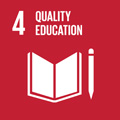- Docente: Paula Marques Hernandez
- Credits: 9
- SSD: L-LIN/07
- Language: Catalan
- Teaching Mode: In-person learning (entirely or partially)
- Campus: Bologna
- Corso: First cycle degree programme (L) in Foreign Languages and Literature (cod. 0979)
-
from Sep 26, 2025 to Dec 19, 2025
Learning outcomes
At the end of this module, students should be able to reach Level A2+ of the language proficiency levels described in the Common European Framework of Reference for Languages.
Course contents
The course is divided into a total of 90 hours of teaching, of which 30 hours will be dedicated to lectures and 30 hours to language practice sessions. In addition, the course also includes 50 hours of tutoring, which will allow students to review the course content in a more engaging way.
(Lectures)
- Culture, Civilization and Language
- Delimitation and geography of the Catalan countries
- Linguistic variation. Morphology and lexicon of the main variants
- A brief history of the Romance languages
- Sociolinguistic situation
(Language practice sessions)
Communicative goals
- Communicate in the classroom;
- Recognize Catalan among other languages;
- Understand frequently used phrases and expressions relating to areas of immediate relevance;
- Communicate in simple and routine activities that require a simple exchange of information on familiar and common topics;
- Describe in simple terms aspects of your background and the environment around us;
- Express immediate needs;
- Understand simple oral and written texts;
- Express yourself orally and in particular: greet, talk on the phone, ask and give personal information, indicate the time, make requests, describe objects;
- Writing letters, emails and describing situations involving objects and people;
- Express your personal opinions and your tastes and preferences;
- Ask for clarifications and explanations;
- Describe the physical appearance, personality, studies done;
- Telling past events;
- Understand short and simple written texts, such as postcards, e-mails, cooking recipes; understand the purpose of a message; identify specific information in notices and simple informative texts;
- Understand simple oral monological texts spoken slowly.
Grammar
- The alphabet, punctuation and orthographic signs
- Personal pronouns
- Reflexive pronouns
- The definite and indefinite articles
- The questions: com qui, quants, quantes, quines, d’on, per què, de què, on, (a) quin, quanThe possessives
- The demonstratives
- Nationality adjectives: gender and number
- The quantifiers
- Pronouns of indirect object
- Time expressions
- The present tense
- Prepositions: a ... de, desde ... fins a, entre ... i, a, en, amb
- links: però, perquè, for això, doncs; a més, també
- The verbs "ser", "dir-se", "tenir", "parlar", "estudiar", "treballar", "fer" "haver-hi", "ser", "viure", "estar-se" , "Preferir", "agradar", "suportar", "encantar", "anar", "sortir", "llegir", "dur", "portar", "saber", "poder" in the present indicative
- The pronouns of direct object
- The numerals
- The mandatory periphrase in the present indicative: haver de + infinitiu
- Comparatives
- The expressions of place
- The impersonal forms: es pot, s’ha de + infinitiu
- The Past Tense
- Present perfect
- The participles
Vocabulary
- Useful phrases in the classroom
- Names of countries, nationalities and languages
- The trades and professions
- The physique and the character
- The seasons and the weather
- Food and drink
- Fashion and clothes
- Sports and recreational activities; The hobbies
- Parts of the body
- The means of dissemination
- The family
- The house, the furniture
- Life at the university
- The job's world
Readings/Bibliography
Reference manuals:
Vilagrasa, Albert (2018) A punt, 1. Curs de català. Llibre de l'alumne. Barcelona: Publicacions de l'Abadia de Montserrat.
Vilagrasa, Albert (2018) A punt, 1. Curs de català. Llibre d'exercicis. Barcelona: Publicacions de l'Abadia de Montserrat.
You can buy your student book:
http://www.pamsa.cat/pamsa/colleccions/A-punt/A-punt-1-Curs-de-catala-Llibre-de-lalumne.html
http://www.pamsa.cat/pamsa/colleccions/A-punt/A-Punt-1-Curs-de-catala-Llibre-dexercicis.html
We also recommend you to buy the following grammar:
Bastons, N; Bernadó, C; Camajoan, L. (2011). Gramàtica pràctica del català. Barcelona: Teide.
Useful online resources:
Diccionari de l’Institut d’Estudis Catalans: https://dlc.iec.cat/
Diccionari Català-Valencià-Balear: https://dcvb.iec.cat/
Diccionari Normatiu Valencià de l’Acadèmia Valenciana de la Llengua: https://www.avl.gva.es/lexicval
Optimot. Consultes lingüístiques: http://www.gencat.cat/optimot/
Diccionari de Dubtes del Català oral: http://www.llengua.info/ddcor/
Llibre d’Estil de la Corporació Catalana de Mitjans Audiovisuals: https://esadir.cat/
Gramàtica essencial de la Llengua Catalana de l’Institut d’Estudis Catalans [nova versió 2018]: https://geiec.iec.cat/
on paper:
Diccionari Italià-Català, Barcelona, Text-La Galera, 1992
Gramàtica de la Llengua Catalana, Barcelona, Institut d’Estudis Catalans, 2016
For non-attending Catalan-speaking students, additionally, choose one reading from the following three books:
Klein, Irene (2023). Les absències, Alzira: Bromera
Pujadas, Irene (2021). Els desperfectes, Barcelona: L'Altra editorial
Climent, Maria (2023). A casa teníem un himne, Barcelona: L'Altra editorial
and for the theoretical content:
Mollà, Toni (2002).Manual de sociolingüística, Alzira: Bromera.
Badia, A. M. (2004). Moments clau de la història de la llengua catalana. València: Universitat de València.
Bandi, E. (ed). (1993). La formazione dell’Europa linguistica. Le lingue d’Europa tra la fine del I e del II millennio. Florència: La Nuova Italia.
Boix, E.; Vila, F. X. (1998). Sociolingüística de la llengua catalana. Barcelona: Ariel
Boix, E. (2012). Història de la sociolingüística catalana, Barcelona, UOC (material online [http://openaccess.uoc.edu/webapps/o2/bitstream/10609/50921/3/Socioling%C3%BC%C3%ADstica%20catalana_M%C3%B2dul2_Hist%C3%B2ria%20de%20la%20socioling%C3%BC%C3%ADstica%20catalana.pdf] )
Joan, B; Marí, E. (2019). Breu història de la llengua als Països Catalans. Barcelona: Pagès Editors.
Diversos autors (2011). “La sociolingüística catalana, balanç i reptes de futur”. Treballs de Sociolingüística Catalana (vol. 21). Barcelona: Societat Catalana de Sociolingüística / Institut d’Estudis Catalans.
Diversos autors (2018). El català, llengua mitjana d’Europa. Multilingüisme, globalització i sostenibilitat lingüística. Barcelona: Octaedro.
Diversos autors (2018). La nazione catalana. Storia, lingua, politica, costituzione nella prospettiva plurinazionale. Napoli: Editoriale Scientifica.
Ferrando, A.; Nicolàs, M. (2011). Història de la llengua catalana. Barcelona: Editorial UOC.
Junyent, C; Zaballa, B. (2018). El futur del català depèn de tu. Barcelona: La Campana.
Romaine, S. (1996). El lenguaje en la Sociedad. Una introducción a la sociolingüística. Barcelona: Ariel.
Castro, Liz (ed.). What’s up with Catalonia? Ashfield, Massachusetts: Catalonia Press, 2013.
IEC, Simposi Internacional sobre el català al segle XX: Balanç de situació i perspectives de futur. Barcelona: IEC.
Pujolar, J. (2012). Panorama de la sociolingüística catalana. Barcelona, UOC (material online [http://openaccess.uoc.edu/webapps/o2/bitstream/10609/50921/2/Socioling%C3%BC%C3%ADstica%20catalana_M%C3%B2dul1_Panorama%20de%20la%20socioling%C3%BC%C3%ADstica.pdf] )
Toso, F. (2008). Le minoranze linguistiche in Italia. Bologna, Il Mulino.
Veny, J. (2011). Petit atles lingüístic del domini català. Volum 1. Barcelona, Institut d’Estudis Catalans
*Catalan-speaking students
may obtain the following textbooks according to the variety of Catalan they prefer:
Western variety: Valencian
PUNT PER PUNT C1 (4th ed.) [https://publicaciones.ua.es/ca/libro/punt-per-punt-c1_155707/ ]
Curs de valencià nivell C1
Publicacions de la Universitat d'Alacant
Eastern variety (Catalonia and the Balearic Islands):
Nivell C1 [https://www.castellnouedicions.com/nivell-c1-1008-ca ]
Curs de llengua catalana
Castellnou
For theoretical content:
Mollà, Toni (2002). Manual de sociolingüística, Alzira: Bromera
Teaching methods
The course has a highly practical and applied approach. It is a communicative type course developed to acquire optimal linguistic skills in Catalan in small groups, which allows for the acquisition of the language in a much more effective and personalized way.
The teaching methodology includes resources of all kinds, from the classic grammar manual with exercises to more contemporary resources, such as YouTube, webseries in Catalan (Drama, Mai neva a ciutat), self-learning web platforms (h5p.cat), social networks (Instagram), songs, etc.
Furthermore, academic and cultural meetings will be held throughout the semester in order to listen, produce oral texts and interact in real cultural situations.
Assessment methods
During the course, students will have to demonstrate their learning process and will participate in the constructive evaluation of their peers. Empathy and teamwork within the learning of a language is fundamental, therefore, during the semester and at the end of the course, there will be several activities to be carried out individually and in groups in order to activate and put into practice from the first moment their acquired knowledge.
During the semester, the student will have to carry out various tasks: compositions, reading a book in the language and activities and an oral presentation in groups on theoretical topics.
At the end of the course, the student will have to do a final written test (grammar, listening and written production) and an oral test that will focus on the grammatical and lexical content covered in the language practice sessions.
- Writing (10%)
- Book reading + activities (10%)
- Final written exam on the contents of the "esercitazioni" (40%) + Final Written Exam on Lezioni Frontali (30%)
- Final oral exam on the contents of the "esercitazioni" (10%)
*for non-attending Catalan speakers:
Written language exam (50%)**
Written sociolinguistics exam (50%)
** this part may be validated if you hold a certified C1 level diploma
Students with SLD or temporary or permanent disabilities. It is suggested that they get in touch as soon as possible with the relevant University office (https://site.unibo.it/studenti-con-disabilita-e-dsa/en) and with the lecturer in order to seek together the most effective strategies for following the lessons and/or preparing for the examination.
Teaching tools
Cultural and academic events will be organized, and participation is strongly encouraged. Additionally, the students will be able to attend 30 hours of tutoring with a native speaker.
Links to further information
https://www.unibo.it/sitoweb/paula.marques2/
Office hours
See the website of Paula Marques Hernandez
SDGs




This teaching activity contributes to the achievement of the Sustainable Development Goals of the UN 2030 Agenda.
